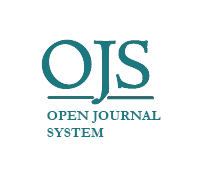Determinants Theory of Planned Behavior on Student’s Interest in Using Financial Technology
DOI:
https://doi.org/10.22219/jrak.v11i3.17903Keywords:
accounting students, financial technology, interest of use, theory of planned behaviorAbstract
The purpose of this study was to determine the effect of factors in theory of planned behavior on the interest of using financial technology in University of Muhammadiyah Malang accounting students. The factors in this theory are attitude, subjective norm, and perceived control behavior. This study also reveals others factors that influence the interest of using financial technology. The method used in this study is a mixed method research. Quantitative data obtained from questionnaires, and qualitative data obtained from interviews with several students. Results of this study found a positive and significant influence on attitude and perceived behavorial control on the interest of using financial technology and there was no significant effect of subjective norm on the interest of using financial technology. Results of this study also found other factors that influence interest of using financial technology, including privacy, needs, and risks. these factors can be taken into consideration in developing financial technology in the future.
Downloads
References
Achmat, Z. (2010). Theory of planned behavior, masihkah relevan.
Ajzen, I. (1991). The theory of planned behavior. Organizational behavior and human decision processes, 50(2), 179-211.
Amalia, S. N. A. (2018). Faktor-Faktor Yang Mempengaruhi Minat Individu Terhadap Financial Technology (Fintech) Syariah (Paytren) Sebagai Salah Satu Alat Transaksi Pembayaran (PendekatanTechnology Acceptance Model (TAM) dan Theory Of Planned Behavior (TPB). Iqtishaduna, 9(1), 64-79.
Ayudya, A. C., & Wibowo, A. (2018). The intention to use e-money using theory of planned behavior and locus of control. Jurnal Keuangan Dan Perbankan, 22(2), 335-349.
Dharmmesta, B. S. (1998). Theory of planned behaviour dalam penelitian sikap, niat dan perilaku konsumen. Kelola, 7(1998).
Ferdiana, A. M. K., & Darma, G. S. (2019). Understanding Fintech Through Go-Pay. International Journal of Innovative Science and Research Technology, 4(2), 257-260.
Fishbein, M., & Ajzen, I. (1977). Belief, attitude, intention, and behavior: An introduction to theory and research. Philosophy and Rhetoric, 10(2).
Hidayat, A. S., Alam, F. S., & Helmi, M. I. (2020). Consumer protection on peer to peer lending financial technology in Indonesia. International Journal of Scientific and Technology Research, 9(1), 4069-4072.
Hiyanti, H., Nugroho, L., Sukmadilaga, C., & Fitrijanti, T. (2020). Peluang dan tantangan fintech (financial technology) syariah di Indonesia. Jurnal Ilmiah Ekonomi Islam, 5(3), 326-333.
Iskandar, D. (2019). The use of the financial technology (Fintech) system is reviewed from society perception: Attitude, interest, motivation, experience & hope. International Journal of Multidisciplinary Research, 5(6), 138-148.
Jaya, I. (2019). The Impact of Financial Inclusion on Public Financial Services Education through Financial Technology in Sleman Regency, Indonesia. Esensi: Jurnal Bisnis dan Manajemen, 9(2), 155-174.
Madden, T. J., Ellen, P. S., & Ajzen, I. (1992). A comparison of the theory of planned behavior and the theory of reasoned action. Personality and social psychology Bulletin, 18(1), 3-9.
Novitasari, S. (2019). ANALISIS FAKTOR-FAKTOR YANG MEMPENGARUHI MINAT MASYARAKAT MUSLIM PEDESAAN DALAM MENGGUNAKAN LEMBAGA KEUANGAN SYARIAH IAIN SALATIGA].
Nuryakin, C., Aisha, L., & Massie, N. (2019). Financial Technology in Indonesia: A Fragmented Instrument for Financial Inclusion. LPEM-FEB UI Working Paper, 36, 1-9.
Octaviana, P., & Yusuf, A. (2021). ANALISIS FAKTOR-FAKTOR YANG MEMPENGARUHI MINAT MENGGUNAKAN E-MONEY OVO DI KARAWANG (STUDI PADA PENGGUNA OVO DI KARAWANG). Derivatif: Jurnal Manajemen, 15(1), 12-20.
Putranto, B. D., & Sobari, N. (2021). Predicting Intention of Using Fintech Lending to Bank Users in Indonesia. 18th International Symposium on Management (INSYMA 2021),
Putritama, A. (2019). The mobile payment fintech continuance usage intention in Indonesia. Jurnal Economia, 15(2), 243-258.
Seni, N. N. A., & Ratnadi, N. M. D. (2017). Theory of planned behavior untuk memprediksi niat berinvestasi. E-Jurnal Ekonomi dan Bisnis Universitas Udayana, 4043, 4068.
Setiawan, A., Rofingatun, S., & Patma, K. (2020). Pengaruh Persepsi Kemudahaan Penggunaan, Efektivitas, Risiko Terhadap Minat Dan Penggunaan Financial Technologi (Fintech) Dengan Minat Sebagai Variabel Mediasi. Jurnal Akuntansi Dan Keuangan Daerah, 15(2), 35-48.
Setiawan, A., Setyasih, R. D., & Hosana, L. J. (2020). ANALISIS FAKTOR-FAKTOR PENERIMAAN PENGGUNAAN FINANCIAL TECHNOLOGY PADA SISTEM PEMBAYARAN TRANSPORTASI ONLINE: THEORY OF PLANNED BEHAVIOR (TPB). Monex: Journal Research Accounting Politeknik Tegal, 9(1), 30-37.
Suryandari, N. K. D., Suprapti, N. W. S., & Sukaatmadja, I. P. G. (2016). Aplikasi Theory of Planned Behavior dalam menjelaskan perilaku ekologis generasi Y di Kota Denpasar. MATRIK: Jurnal Manajemen, Strategi Bisnis dan Kewirausahaan.
Usanti, T. P., Silvia, F., & Setiawati, A. P. (2020). Dispute settlement method for lending in supply chain financial technology in Indonesia. Int. J. Supply Chain Manag, 9(3), 435-443.
Utami, S. S., & Kusumawati, B. (2017). Faktor-Faktor Yang Memengaruhi Minat Penggunaan E-Money (Studi pada Mahasiswa STIE Ahmad Dahlan Jakarta). BALANCE: Economic, Business, Management and Accounting Journal, 14(02).
Vasiljeva, T., & Lukanova, K. (2016). Commercial banks and FINTECH companies in the digital transformation: Challenges for the future. Journal of Business Management(11).
Downloads
Published
Issue
Section
License
Copyright (c) 2021 Driana Leniwati, Pradio Rachmad Brilyan, Endang Dwi Wahyuni

This work is licensed under a Creative Commons Attribution 4.0 International License.

Jurnal Reviu Akuntansi dan Keuangan is licensed under a Creative Commons Attribution-NonCommercial-ShareAlike 4.0 International License.
Authors who publish with this journal agree to the following terms:
- Authors retain copyright and grant the journal right of first publication with the work simultaneously licensed under a Creative Commons Attribution-NonCommercial-ShareAlike 4.0 International License that allows others to share the work with an acknowledgement of the work's authorship and initial publication in this journal.
- Authors are able to enter into separate, additional contractual arrangements for the non-exclusive distribution of the journal's published version of the work (e.g., post it to an institutional repository or publish it in a book), with an acknowledgement of its initial publication in this journal.
- Authors are permitted and encouraged to post their work online (e.g., in institutional repositories or on their website) prior to and during the submission process, as it can lead to productive exchanges, as well as earlier and greater citation of published work (See The Effect of Open Access).










